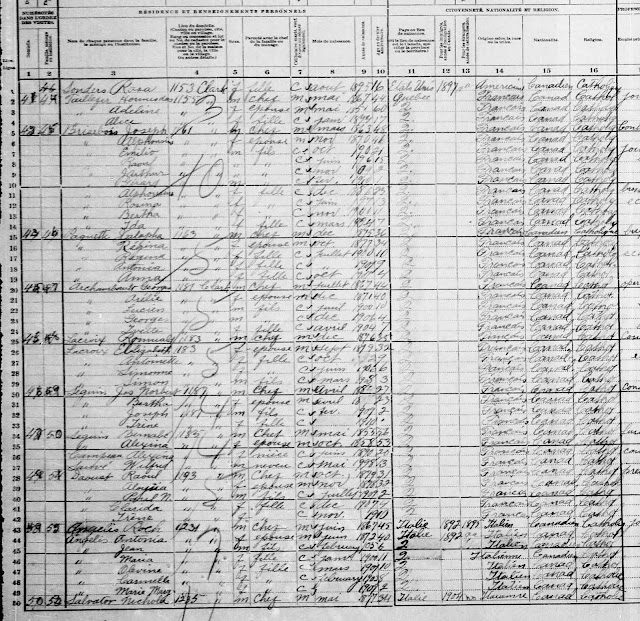Donato Di MAULO et Maria Giuseppa TODARO were married in 1926 in Montreal. Both are Italians, except that the bride was born in Montreal. The first document I want to find is the marriage bulletin from the collection «Les mariages du Québec de 1926 à 1997». From that document, we will learn the date and the name of the church where they were married. We found the document. The information shows on line 23 and 24.
Bulletin statistique de mariage du Québec.
We now can search for the marriage record in the Notre-Dame de la Défense of Montréal register to get more info.
Mariage record of Donato DI MAULO and Maria Giuseppa TODARO
This record gives a lot of info. First, we learn that Donato Di MAULO is the son of Saverio Di MAULO and Maria Michela MARRONE, that he was born in Montorio nei Frentani, province of Campobasso on the 20th of October 1903. And that Maria Giuseppa TODARO is the daughter of Giuseppe TODARO and Maria SAURO, that she was born in Montreal on the 21st of March 1906.
To learn more about the family of the groom in Italy, we need to search the civil records of Montorio nei Frentani, province of Campobasso on Antenati web site. I use the marriage record index to find the marriage of Saverio Di MAULO and Maria Michela MARRONE. There it is : they were married in 1892, record number 18.
Excerpt of the marriage record index of Montorio nei Frentani.
Then, it was easy finding the record. The marriage was registered on the 3rd of December 1892 in the civil records of Montorio nei Frentani. Saverio is the son of Antonio Di MAULO and Maria Caterina MONTANARO.
Marriage found in the civil records of Montorio nei Frentani.








